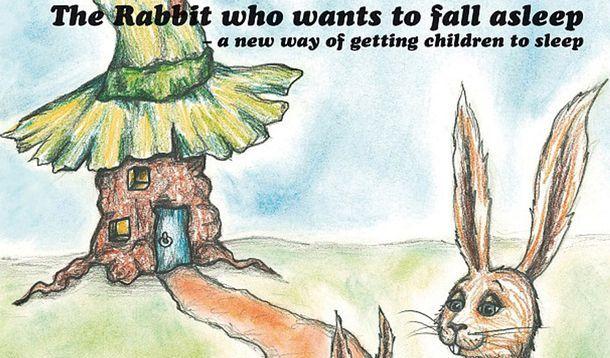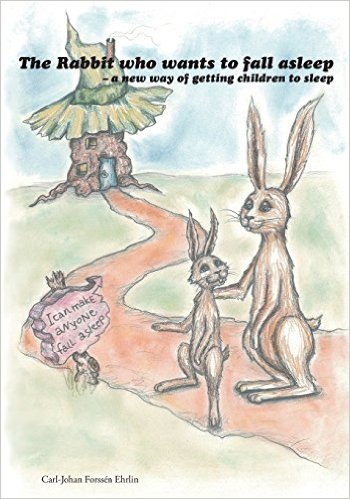
When a new way to help your child fall asleep is announced in the media, the parenting world holds on for dear life and every sleep-deprived, caffeine fueled parent runs to the quickest store, and in this case the bookstore, in hopes that this is going to be the solution to the constant bedtime battles in their home. As a sleep professional, when new sleep aid products hit the market I feel it’s my job to check them out and research them as time and time again parents come to me in need of help after spending money on these aids that offer false hope and zero sleep.
The Rabbit Who Wants to Fall Asleep, written by Carl-Johan Forssén Ehrlin, is a children’s bedtime book, titled “a new way of getting children to sleep.”
It’s the story of Roger the rabbit whose family is helping him fall asleep. The book is written with the intent to relax and calm your child at bedtime using psychological techniques where parents are encouraged to talk in soothing tones, emphasize certain words or sentences, and even yawn throughout the story. Many parents in my own sleep community were contacting me and asking me my opinion on the book and this book peaked my interest as I believe in incorporating relaxation techniques into family members bedtime routine and day-to-day life.
So I bought it and read it.

And here you have my Snoozes and Loses on The Rabbit Who Wants To Fall Asleep.
The Snoozes (aka the good sleep stuff)
The characters in the book, being animals, make the story interesting to children and incorporating a relaxing routine as part of your child’s bedtime is always a good idea. This book can help you do just that. The story allows the child to prepare for sleep and while it teaches Roger the rabbit why he needs to sleep and how to fall asleep it in turn can teach your child the same. Any form of relaxation technique - breathing exercises, mindfulness, yoga - is a positive addition to your child’s routine at night, even your child’s day-to-day, provided it’s something that is practiced daily within your household. Which brings me too…
The Loses
Unless you are spending at least 10 minutes a day with your child, teaching them how to incorporate calming and relaxing behavior, in whatever form, it’s not going to stick. It’s like learning any new habit or behavior, until we make it part of our child’s nightly regime, bedtime is not likely going to go as easy as this books states it will. I think this book can work very well for an already strong independent sleeper who every now and then needs a bit of help falling asleep at night and whose parents perhaps want to start incorporating other relaxation techniques into their sleep toolbox. But the problem I have with this book is it’s being promoted as the quick fix you need and if you are a parent who is really struggling with your child’s sleep and have been for sometime now this book is not your answer.
It may act as a band-aid solution for your child’s bedtime behavior for a few nights. Maybe even a week or so, but if you don’t have solid sleep habits in place things will unravel very quickly. That I can guarantee. Before downloading or purchasing this book work on the following with your toddler:
Unfortunately in order to make changes you may have to make some not-so-fun ones at bedtime, and reading one book isn’t your solution. Once everything above is in place and bedtime has become easier then I encourage you to create a toolbox of relaxation techniques for your child and The Rabbit Who Wants to Fall Asleep can be a great addition to that.
I provide free child and family sleep support on my Facebook page. I invite you to join our sleep community as I work towards Good Night Sleep Site's mission of a healthier rested family unit. For more sleep tips please visit Good Night Sleep Site and visit me on Instagram and Twitter. Join our movement and #BringBackBedtime.
Image Source: Carl-Johan.com
![]() RELATED: What To Do When Your New Baby Won't Nap
RELATED: What To Do When Your New Baby Won't Nap